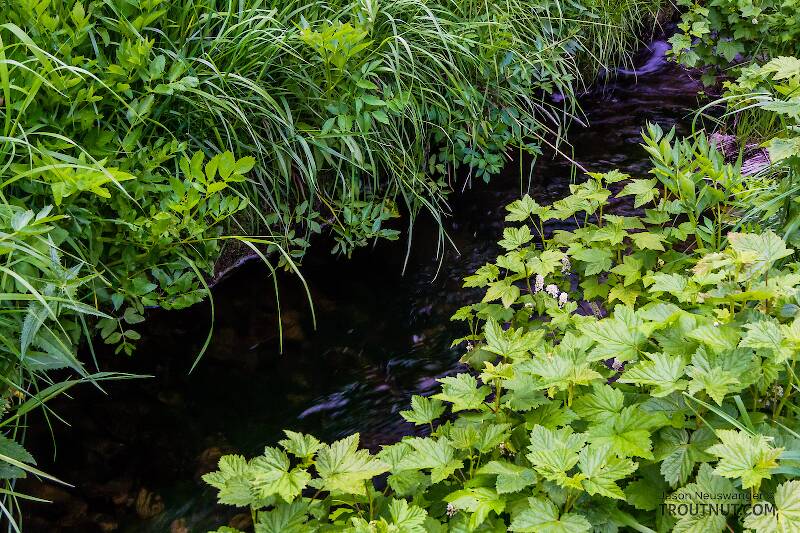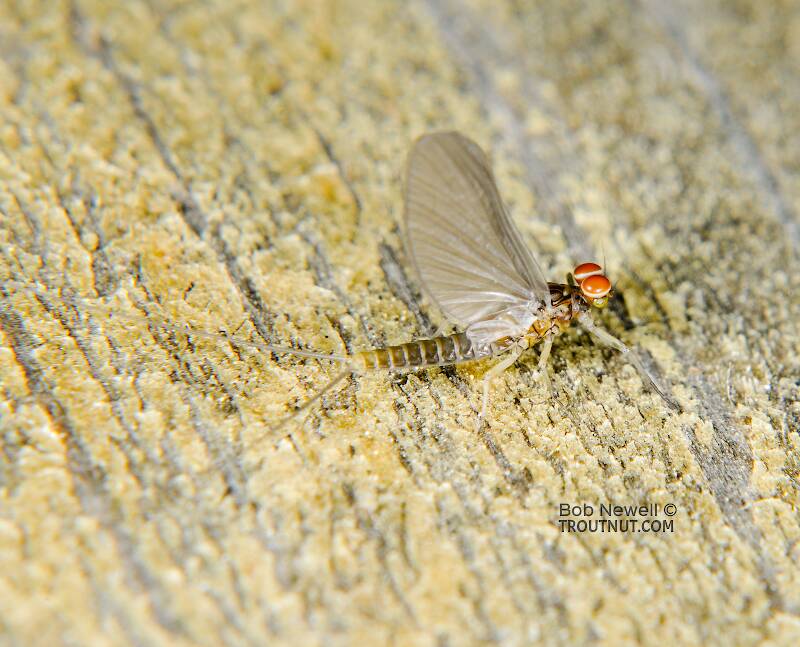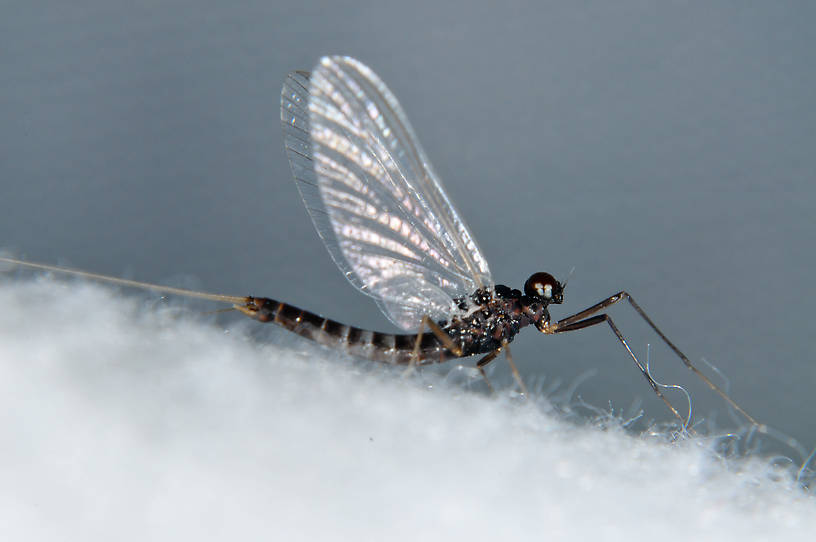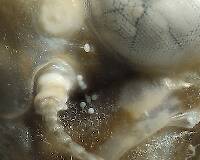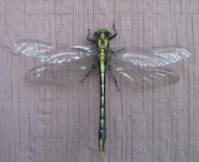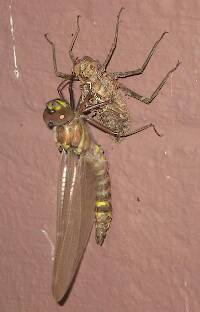
Salmonflies
Pteronarcys californica
The giant Salmonflies of the Western mountains are legendary for their proclivity to elicit consistent dry-fly action and ferocious strikes.
Featured on the forum

I was not fishing, but happened to be at an unrelated social event on a hill above this tiny creek (which I never even saw) when this stonefly flew by me. I assume it came from there. Some key characteristics are tricky to follow, but process of elimination ultimately led me to Sweltsa borealis. It is reassuringly similar to this specimen posted by Bob Newell years ago. It is also so strikingly similar to this nymph from the same river system that I'm comfortable identifying that nymph from this adult. I was especially pleased with the closeup photo of four mites parasitizing this one.

Troutnut is a project started in 2003 by salmonid ecologist Jason "Troutnut" Neuswanger to help anglers and
fly tyers unabashedly embrace the entomological side of the sport. Learn more about Troutnut or
support the project for an enhanced experience here.
Closeup insects by Bnewell from the Touchet River in Washington
Comments / replies
Marsha
Posts: 1
Posts: 1
Marsha on Jun 12, 2012June 12th, 2012, 2:41 pm EDT
Jason, I work for a not-for-profit company, Professor Garfield, which, in conjunction with the state of Indiana and Ball State University, is putting together an educational web-site for migrant children. We are building science modules. One of our needs for our life cycle modules are photo/video images of dragonfly nymphs, eggs, and dragonflies laying eggs. Would you give permission for us to use your video/photo of a dragonfly nymph? Do you have and could we use any other dragonfly life stage images you have?
Best to you-- Marsha Jacobson
Best to you-- Marsha Jacobson
Martinlf on Jun 12, 2012June 12th, 2012, 6:09 pm EDT
Marsha, you might PM Jason directly. I don't know how busy he is, but if he's in the field he might not check in immediately. A PM may show up on his email, alerting him to your request.
"He spread them a yard and a half. 'And every one that got away is this big.'"
--Fred Chappell
--Fred Chappell
Troutnut on Jun 12, 2012June 12th, 2012, 6:23 pm EDT
Marsha, you're welcome to use anything I have here on the site. I don't have anything other than what's online, though.
Jason Neuswanger, Ph.D.
Troutnut and salmonid ecologist
Troutnut and salmonid ecologist
Quick Reply
Related Discussions
Topic
Replies
Last Reply
3
Mar 30, 2012
by Entoman
by Entoman
Re: Identification of a possible Cordulegaster Dragonfly Nymph
In Cordulegaster Dragonfly Nymph by IanB
In Cordulegaster Dragonfly Nymph by IanB
6
Feb 10, 2017
by Taxon
by Taxon
Re: Lots of new pictures to check out, coming online tonight/tomorrow
In General Discussion by Troutnut
In General Discussion by Troutnut
1
Oct 4, 2006
by Dinerobyn
by Dinerobyn
10
Apr 26, 2012
by Dejackson
by Dejackson

